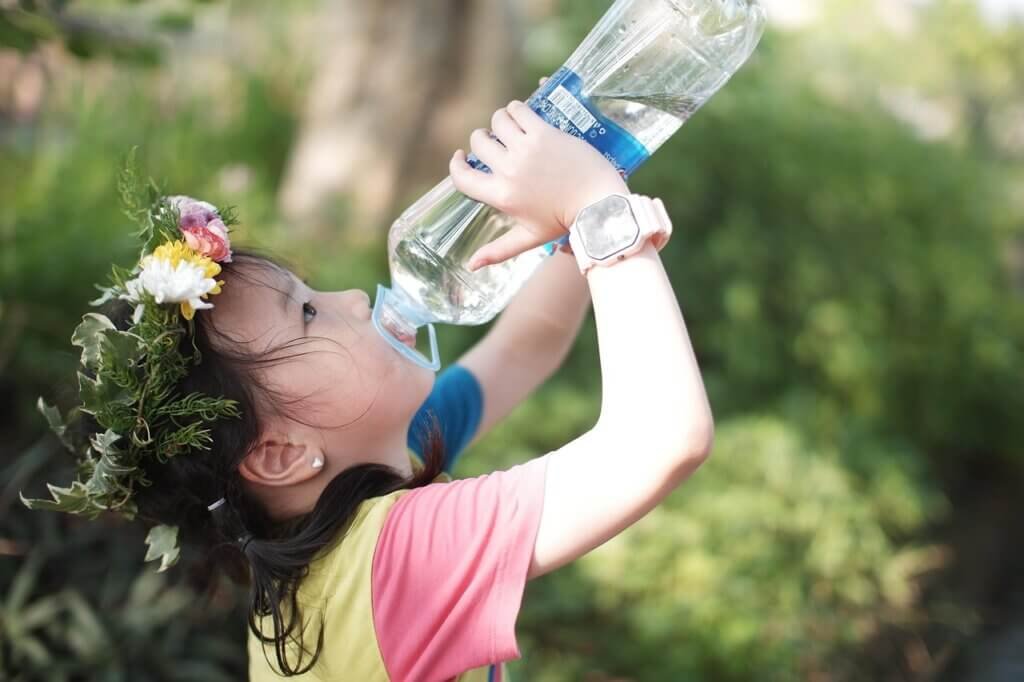
Hydration is a fundamental aspect of health, but for individuals with nonverbal autism, ensuring adequate water intake can be a unique and often overlooked challenge. As a parent of a nonverbal autistic child, I’ve experienced firsthand how difficult it can be to keep my son, Ezra, hydrated. From sensory aversions to communication barriers, the struggle is real and it’s one many caregivers face.
Water is essential for everyone, but for individuals with nonverbal autism, the stakes are even higher. Dehydration can exacerbate sensory sensitivities, affect mood, and even lead to behavioral challenges. In this article, we’ll explore why hydration is so crucial for nonverbal individuals, the signs of dehydration to watch for, and creative strategies to make drinking water easier and more appealing.
Hydration and Nonverbal Autism

Nonverbal autism is a spectrum condition characterized by significant communication challenges, which can impact daily life in profound ways. For individuals like Ezra, expressing basic needs like thirst, can be incredibly difficult. Without the ability to say, “I’m thirsty,” or even recognize the sensation of thirst, many nonverbal individuals rely on caregivers to anticipate and meet their hydration needs.
Additionally, sensory sensitivities often accompany nonverbal autism. The taste, temperature, or texture of water can be overwhelming, making it hard to drink enough. These challenges highlight the importance of understanding nonverbal autism and tailoring hydration strategies to meet individual needs.
Understanding nonverbal autism is crucial for caregivers, educators, and loved ones, as it helps create a supportive environment that meets the individual’s unique needs. For a deeper dive into this topic, check out my blog post, Thriving in Silence: Nonverbal Autistic Individuals in a World Built for Words, where we explore the lived experiences of nonverbal individuals and how they navigate a world that often prioritizes verbal communication.
The Science of Hydration and Its Importance

Water is essential for every cell, tissue, and organ in the body, playing a critical role in maintaining physical and cognitive function. It’s not just about quenching thirst, hydration is the foundation of nearly every bodily process. From aiding digestion and regulating body temperature to supporting brain function and flushing out toxins, water is the unsung hero of our health.
For individuals with autism, hydration takes on an even greater significance. Research has shown that dehydration can exacerbate many of the challenges already faced by those on the spectrum, including sensory sensitivities, mood regulation, and cognitive processing. When the body lacks sufficient water, it can’t perform at its best, and this is especially true for individuals with unique neurological and sensory profiles.
Why Hydration is Especially Important for Autism
Several factors make hydration particularly important for individuals with autism. First, sensory sensitivities can make it difficult to recognize or respond to thirst cues. Some individuals may not feel thirst in the same way others do, or they may be so focused on other activities that they forget to drink water altogether.
Additionally, certain medications commonly prescribed to individuals with autism, such as those for ADHD or anxiety, can have side effects that increase the risk of dehydration. These medications may cause dry mouth, increased sweating, or reduced appetite, all of which can contribute to a lack of hydration.
Finally, routine disruptions, common in the lives of individuals with autism can make it harder to establish consistent hydration habits. Caregivers often need to take a proactive role in ensuring that their loved ones are drinking enough water throughout the day.
Understanding the science behind hydration highlights just how crucial it is for individuals with nonverbal autism. Water isn’t just a basic need and it’s a vital tool for supporting physical health, cognitive function, sensory processing, and emotional well-being. By prioritizing hydration, caregivers can help their loved ones thrive and navigate the challenges of daily life with greater ease.
For further reading on the importance of hydration, check out this article from Mayo Clinic.
Why Hydration is a Challenge for Nonverbal Individuals

For individuals with nonverbal autism, communicating thirst or recognizing the need to drink water can be incredibly difficult. Ezra, for example, rarely seeks out water on his own. If I don’t proactively offer it, he can go hours without drinking.
Without the ability to express their needs verbally, many rely on caregivers to interpret subtle cues or anticipate their hydration needs. However, even when caregivers are attentive, sensory sensitivities can create additional barriers to staying hydrated.
Sensory Sensitivities and Their Impact
Sensory sensitivities are a hallmark of autism, and they can significantly affect how individuals experience and interact with the world—including how they consume water. For some, the taste of water might be unappealing or even overwhelming. Tap water, for example, can have a distinct flavor due to minerals or chlorine, which might be off-putting to someone with heightened taste sensitivity. Others might find the lack of flavor in water boring or unsatisfying, especially if they’re used to drinking sweetened beverages like juice or soda.
Temperature is another common issue. Some individuals might only tolerate water at a specific temperature, whether ice-cold, room temperature, or slightly warm. Water that’s too cold might feel sharp or uncomfortable, while water that’s too warm might feel unpleasant or even trigger a gag reflex. These preferences can make it challenging to offer water in a way that’s consistently appealing.
The sensation of swallowing can also be a hurdle. For some individuals with autism, the act of swallowing liquids might feel uncomfortable or even painful due to oral motor difficulties or sensory processing differences. This can lead to an aversion to drinking water altogether, as the experience itself becomes associated with discomfort.
Communication Barriers and Hydration
Compounding these sensory challenges are the communication barriers that many nonverbal individuals face. Without the ability to say, “I’m thirsty,” or even point to a glass of water, individuals with nonverbal autism often rely on caregivers to recognize and respond to their needs. However, thirst cues can be subtle and easily missed, especially if the individual has difficulty expressing discomfort or has learned to suppress their needs over time.
For example, a child might not realize they’re thirsty until they’re already dehydrated, or they might not understand how to communicate that need even if they do recognize it. This can lead to a cycle of dehydration, where the individual becomes increasingly uncomfortable but is unable to ask for help.

Routine Disruptions and Hydration Habits
Many individuals with autism thrive on routine and predictability, and disruptions to their daily schedule can make it harder to establish consistent hydration habits. For example, a busy day filled with new activities or transitions might make it easy to forget about drinking water. Similarly, changes in environment such as traveling or visiting a new place, can disrupt established routines and make it harder to remember to stay hydrated.
Caregivers often need to take a proactive role in creating and maintaining hydration routines, but even this can be challenging. For instance, offering water at regular intervals might work for some individuals, but others might resist if they’re engrossed in an activity or don’t feel thirsty at that moment. Balancing the need for hydration with the individual’s preferences and routines requires creativity and flexibility.
The Role of Caregivers in Navigating Hydration Challenges
Caregivers play a crucial role in addressing these challenges, but it’s not always easy. It requires a deep understanding of the individual’s sensory preferences, communication style, and daily routines. For example, a caregiver might need to experiment with different types of water (e.g., filtered, bottled, or flavored) to find one that’s appealing. They might also need to introduce water gradually, using positive reinforcement or visual aids to encourage drinking.
In some cases, caregivers might need to work with occupational therapists or speech-language pathologists to address oral motor difficulties or sensory aversions. These professionals can provide strategies and tools to make drinking water more comfortable and enjoyable, such as using specialized cups or straws designed for individuals with sensory sensitivities.
Sensory sensitivities and communication barriers make hydration a complex issue for individuals with nonverbal autism. From the taste and temperature of water to the sensation of swallowing, there are many factors that can affect how and whether someone drinks water. Caregivers must navigate these challenges with patience, creativity, and a willingness to adapt. By understanding the unique needs of their loved ones and experimenting with different strategies, caregivers can help ensure that hydration becomes a consistent and positive part of daily life.
For more insights on sensory sensitivities and autism, check out this resource from The National Autistic Society.
The Consequences of Dehydration in Nonverbal Autism

Dehydration can have serious consequences for anyone, but for individuals with nonverbal autism, the effects can be even more pronounced. The combination of communication barriers, sensory sensitivities, and potential difficulties in recognizing thirst means that dehydration can go unnoticed for longer periods, leading to a cascade of physical, behavioral, and emotional challenges. Understanding these consequences is crucial for caregivers, as it highlights the importance of proactive hydration management.
Physical Effects of Dehydration
Dehydration occurs when the body loses more fluids than it takes in, disrupting its ability to function properly. For individuals with nonverbal autism, the physical effects of dehydration can be particularly distressing and may exacerbate existing health issues.
- Fatigue and Lethargy: One of the earliest signs of dehydration is a lack of energy. When the body doesn’t have enough water, it struggles to maintain normal functions, leading to feelings of tiredness and sluggishness. For nonverbal individuals, this can make it even harder to engage in daily activities or communicate their needs.
- Headaches and Dizziness: Dehydration can cause headaches or migraines, which are especially challenging for individuals with sensory sensitivities. The pain and discomfort of a headache can heighten sensory overload, making it difficult to cope with everyday stimuli like light or sound. Dizziness, another common symptom, can also increase the risk of falls or accidents.
- Digestive Issues: Water is essential for digestion, and dehydration can lead to constipation, a problem that is already prevalent in the autism community. Chronic constipation can cause significant discomfort and may lead to more severe gastrointestinal issues if left untreated.
- Urinary Tract Infections (UTIs): Dehydration reduces the frequency of urination, which can allow bacteria to build up in the urinary tract. UTIs are not only painful but can also lead to behavioral changes, such as increased irritability or agitation, in nonverbal individuals who cannot verbally express their discomfort.
Behavioral and Emotional Impacts
Dehydration doesn’t just affect the body, it also takes a toll on the mind. I’ve noticed that when Ezra is dehydrated, he becomes more prone to meltdowns and has a harder time regulating his emotions.
- Increased Irritability and Agitation: Even mild dehydration can lead to mood swings, irritability, and heightened anxiety. For nonverbal individuals, who may have difficulty expressing their emotions, this can manifest as increased agitation, restlessness, or even meltdowns.
- Difficulty Concentrating: Dehydration impairs cognitive function, making it harder to focus, process information, or complete tasks. For individuals with autism, who may already face challenges with attention and executive functioning, this can make daily activities even more difficult.
- Sensory Overload: Dehydration can heighten sensory sensitivities, making everyday stimuli, like bright lights, loud noises, or certain textures feel even more overwhelming. This can lead to increased stress and discomfort, further exacerbating behavioral challenges.
- Sleep Disturbances: Dehydration can disrupt sleep patterns, leading to restlessness or difficulty falling asleep. Poor sleep, in turn, can worsen mood, behavior, and cognitive function, creating a vicious cycle.
Long-Term Health Risks
Chronic dehydration, if left unaddressed, can lead to more severe health complications over time. These risks are especially concerning for individuals with nonverbal autism, who may not be able to communicate their discomfort or seek help when needed.
- Kidney Problems: The kidneys rely on water to filter waste from the blood. Chronic dehydration can strain the kidneys, increasing the risk of kidney stones or even kidney damage.
- Electrolyte Imbalances: Water helps maintain the balance of electrolytes in the body, which are essential for muscle function, nerve signaling, and hydration. Dehydration can disrupt this balance, leading to symptoms like muscle cramps, weakness, or even seizures in severe cases.
- Compromised Immune Function: Proper hydration is essential for a healthy immune system. Dehydration can weaken the body’s ability to fight off infections, making individuals more susceptible to illnesses.
The Ripple Effect on Daily Life
The consequences of dehydration extend beyond physical and emotional health, they can also impact an individual’s ability to participate in daily activities and therapies. For example, a dehydrated child may struggle to focus during speech therapy or occupational therapy sessions, reducing the effectiveness of these interventions. Similarly, dehydration-related fatigue or irritability can make it harder to engage in social interactions or community outings, limiting opportunities for growth and connection.
For caregivers, the effects of dehydration can also be significant. Watching a loved one struggle with the physical and emotional consequences of dehydration can be incredibly stressful, especially when communication barriers make it difficult to identify and address the issue. This underscores the importance of proactive hydration management as a key component of caregiving.
The consequences of dehydration in nonverbal autism are far-reaching, affecting physical health, emotional well-being, and daily functioning. From fatigue and headaches to increased irritability and sensory overload, the impacts of dehydration can be profound and multifaceted. For caregivers, understanding these consequences is the first step toward prioritizing hydration and implementing strategies to prevent dehydration before it becomes a problem.
By staying vigilant and proactive, caregivers can help their loved ones avoid the negative effects of dehydration and support their overall health and quality of life. For more information on the signs and risks of dehydration, visit WebMD’s guide to dehydration
Signs of Dehydration That Caregivers Should Watch For

Recognizing dehydration in nonverbal individuals can be tricky, but there are several signs to watch for:
- Physical Signs: Dry lips, dark urine, sunken eyes, or reduced urination.
- Behavioral Signs: Increased irritability, lethargy, or difficulty concentrating.
- Sensory Signs: Heightened sensitivity to light, sound, or touch.
For Ezra, I’ve learned to pay close attention to his mood and energy levels. If he seems more irritable or tired than usual, I’ll check his lips and urine color to see if dehydration might be the cause.
Creative Ways to Make Drinking Water More Appealing

Making water more appealing can be a game-changer for nonverbal individuals. Here are some strategies that have worked for us:
- Flavored Water: Adding a splash of lemon, cucumber, or berries can make water more enticing.
- Fun Cups and Straws: Using colorful cups or silly straws can turn drinking water into a fun activity.
- Temperature Tweaks: Some individuals prefer ice-cold water, while others might like it at room temperature. Experiment to find what works best.
For Ezra, we’ve found that using a bright blue cup makes drinking water more exciting. It’s a small change, but it’s made a big difference.
Hydration Tracking for Nonverbal Individuals

Tracking hydration can help ensure that nonverbal individuals are getting enough water. Here are some methods to try:
- Visual Charts: Use a chart with stickers or checkmarks to track each glass of water.
- Scheduled Drinking Times: Set specific times throughout the day for water breaks.
- Apps and Devices: There are apps designed to remind you to drink water and track intake.
Addressing Sensory Aversions to Water

Sensory aversions can make drinking water a challenge, but there are ways to work around them:
- Experiment with Textures: Some individuals might prefer carbonated water or water with ice.
- Gradual Exposure: Introduce water slowly, starting with small sips.
- Alternative Drinks: Herbal teas or electrolyte drinks can be good alternatives.
For Ezra, we’ve found that letting him choose the temperature and adding some coconut water helps reduce his aversion to plain water.
Alternatives to Water: Hydrating Fruits, Herbal Teas, and Electrolyte Drinks

If water is a no-go, there are other ways to stay hydrated:
- Hydrating Fruits: Watermelon, cucumbers, and oranges are great options.
- Herbal Teas: Caffeine-free teas can be a soothing alternative.
- Electrolyte Drinks: These can be especially helpful during hot weather or after physical activity.
We often give Ezra slices of watermelon or coconut water to supplement his water intake.
How to Gradually Reduce Sugary Drinks and Increase Water Intake

Reducing sugary drinks and encouraging water consumption can be a challenge, especially for individuals with nonverbal autism who may have strong preferences for sweet flavors. However, with patience and a gradual approach, it’s possible to make the transition successfully.
For Ezra, we started by slowly reducing the amount of juice in his cup while adding more water. At first, we mixed just a small amount of water into his juice, so the change was barely noticeable. Over time, we increased the ratio of water to juice, allowing him to adjust to the new taste without feeling overwhelmed. It was a gradual process, but it worked and now, Ezra exclusively drinks water.
Why Reduce Sugary Drinks?
Sugary drinks like juice, soda, or flavored milk can be appealing because of their sweet taste, but they come with downsides. Excessive sugar intake can lead to dental problems, weight gain, and even behavioral issues, such as hyperactivity or irritability. For individuals with autism, who may already struggle with sensory processing or emotional regulation, the effects of sugar can be particularly pronounced.
Water, on the other hand, is a healthier and more hydrating option. It doesn’t contain added sugars or artificial ingredients, making it a better choice for overall health. By reducing sugary drinks and increasing water intake, caregivers can help their loved ones avoid these negative effects while promoting better hydration.
Strategies for Transitioning to Water
Transitioning from sugary drinks to water doesn’t have to happen overnight. Here are some strategies that worked for us and can help other caregivers:
- Start Small: Begin by adding a small amount of water to the individual’s preferred drink. For example, mix 90% juice with 10% water. Gradually increase the water ratio over time, allowing them to adjust to the change.
- Use Visual Cues: Show the individual how the drink is being prepared, so they understand what’s happening. This can help reduce anxiety or resistance to the change.
- Offer Choices: Let the individual choose their cup, straw, or even the temperature of the water. Giving them a sense of control can make the transition easier.
- Add Natural Flavors: If plain water is unappealing, try adding natural flavors like a slice of lemon, cucumber, or berries. This can make water more interesting without adding sugar.
- Celebrate Successes: Praise and reward the individual for drinking water, even if it’s just a small amount. Positive reinforcement can help build a positive association with water.
- Be Consistent: Stick to the plan, even if progress is slow. Consistency is key to helping the individual adapt to the new routine.
Ezra’s Journey to Drinking Water Exclusively
For Ezra, the transition to drinking only water took several months, but it was worth the effort. We started by mixing a small amount of water into his juice, which he didn’t seem to notice at first. Over time, we increased the water ratio, and he gradually became accustomed to the milder taste.
To make the process more engaging, we let him pick out a special water bottle with his favorite color and design. We also experimented with different temperatures and added slices of fruit to make the water more appealing. Eventually, he began to prefer water over juice, and now he exclusively drinks water without any prompting.
The Benefits of Exclusively Drinking Water
Since making the switch to water, we’ve noticed several positive changes in Ezra. He’s more hydrated, which has helped improve his mood and energy levels. He’s also less prone to the sugar-induced hyperactivity that used to follow his juice consumption. Most importantly, he’s developed a healthy habit that will benefit him for years to come.
Transitioning from sugary drinks to water is a gradual process, but it’s one that can have lasting benefits for individuals with nonverbal autism. By starting small, using creative strategies, and staying consistent, caregivers can help their loved ones make the switch successfully. For Ezra, the journey to drinking only water has been a rewarding one, and it’s a change that has positively impacted his health and well-being.
For more tips on reducing sugar intake, check out this resource from HealthyChildren.org.
Every Sip Counts

Hydration is a simple yet powerful way to support the health and well-being of individuals with nonverbal autism. By understanding the unique challenges, they face and implementing creative strategies, caregivers can make a significant difference in their loved ones’ lives.
If you found this article helpful, please share it with others who might benefit. Let’s work together to ensure that everyone, regardless of their communication abilities, has access to the hydration they need.
If you’re a caregiver for a nonverbal individual, what strategies have worked for you? Share your experiences in the comments below—we’d love to hear from you! For more tips and resources, check out Autism Speaks and The National Autistic Society.
